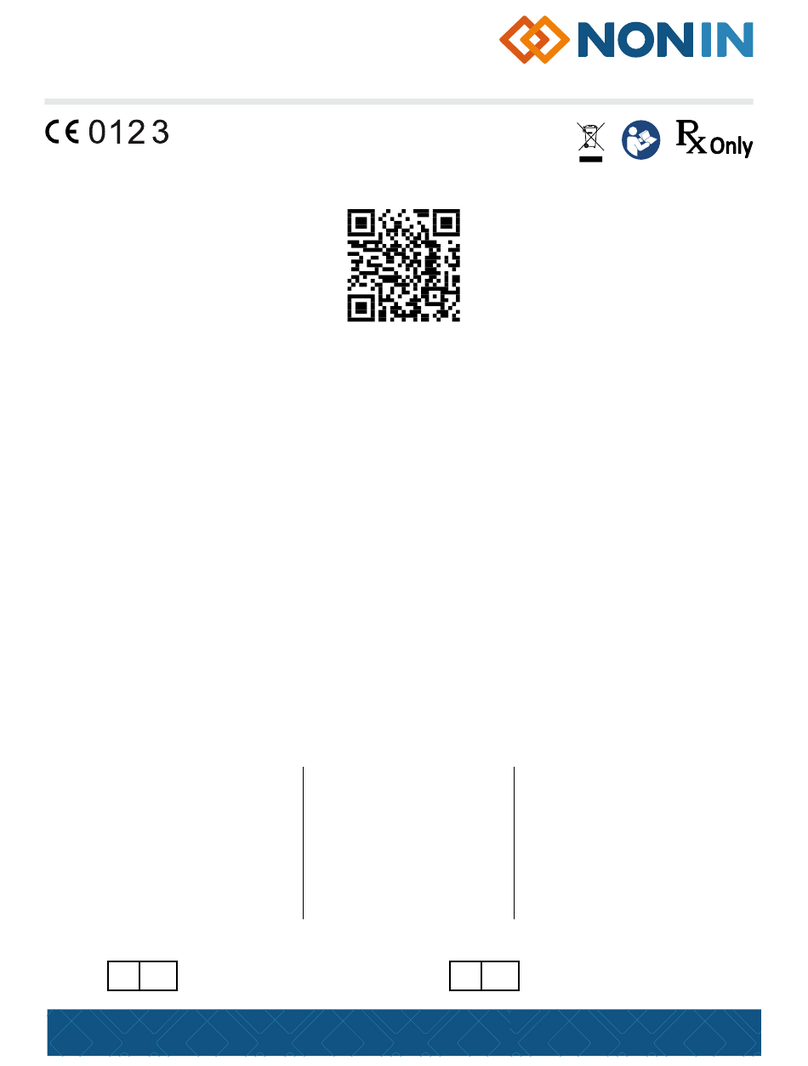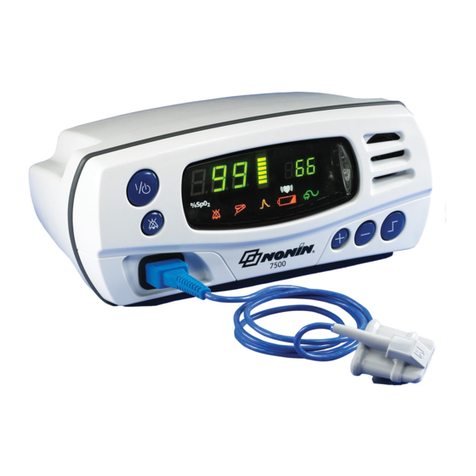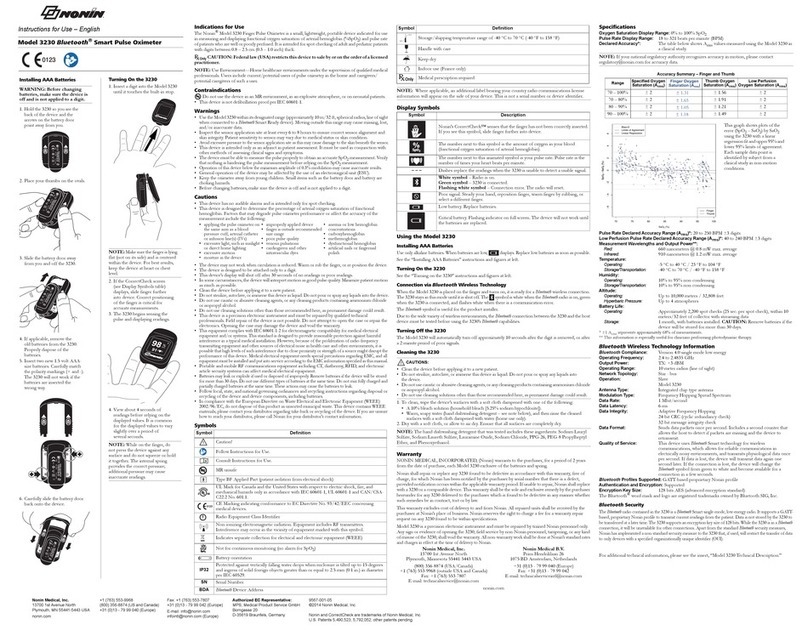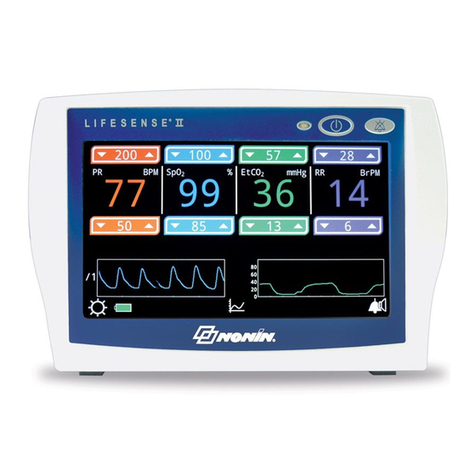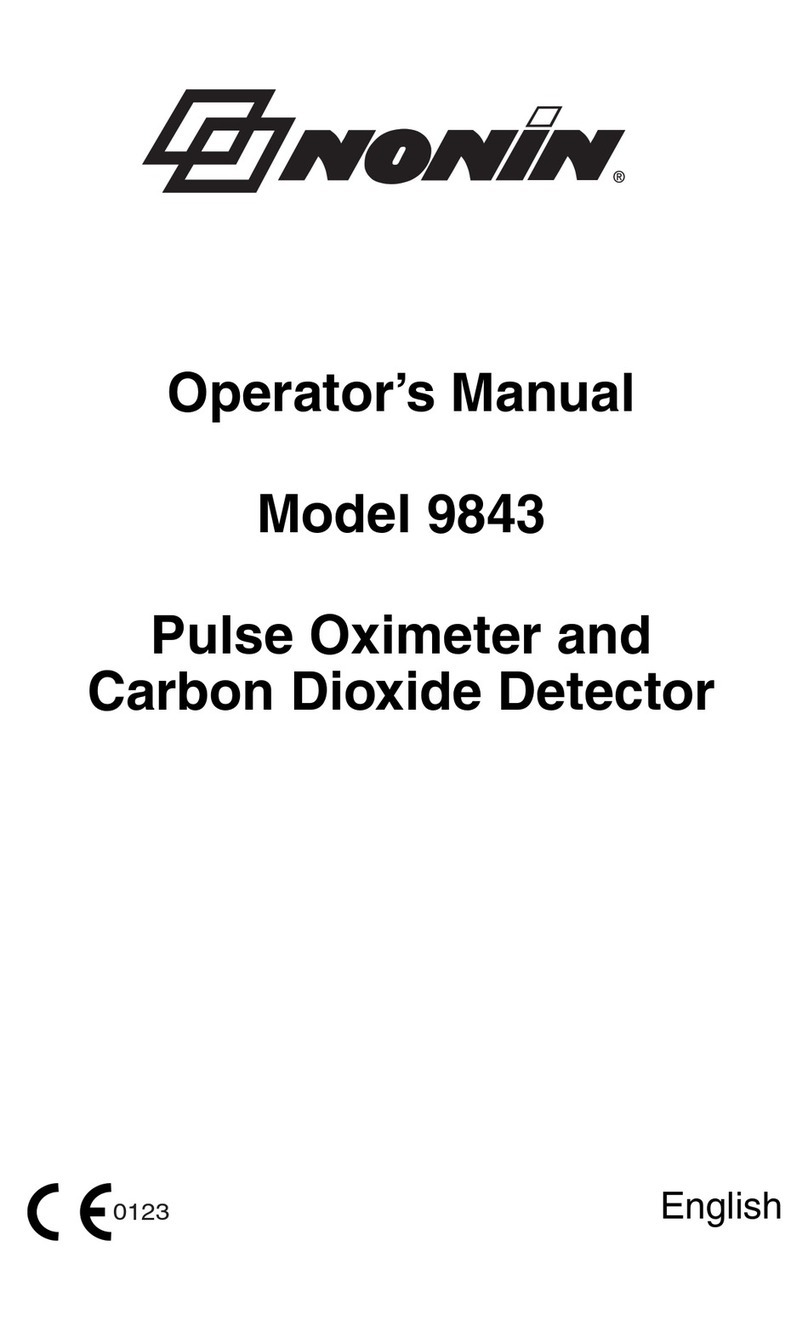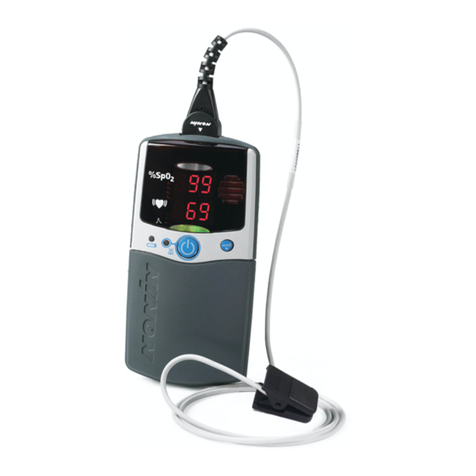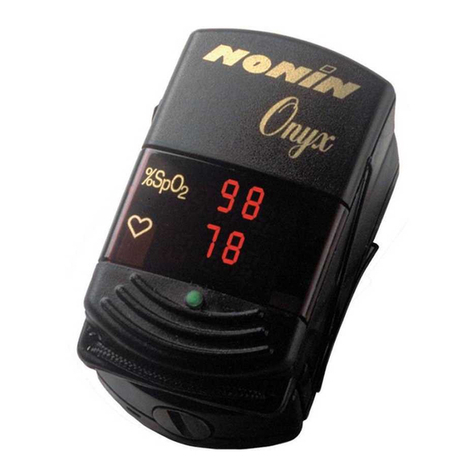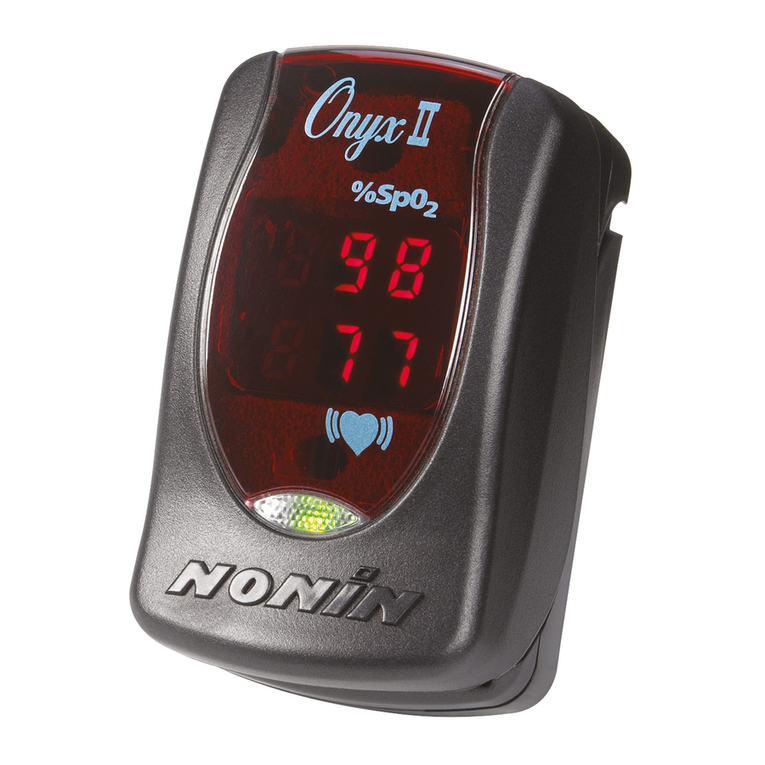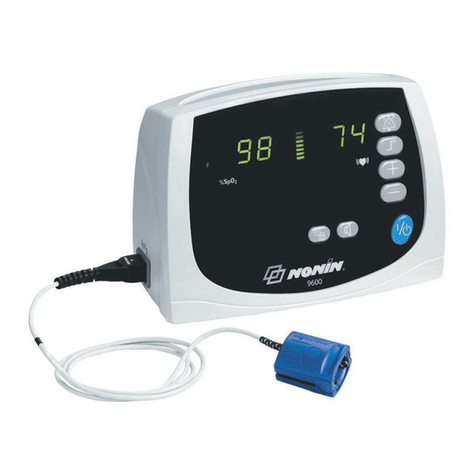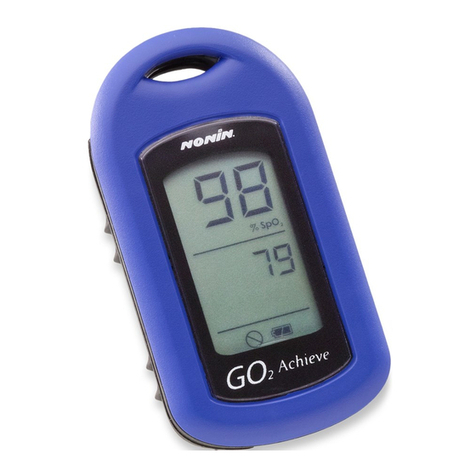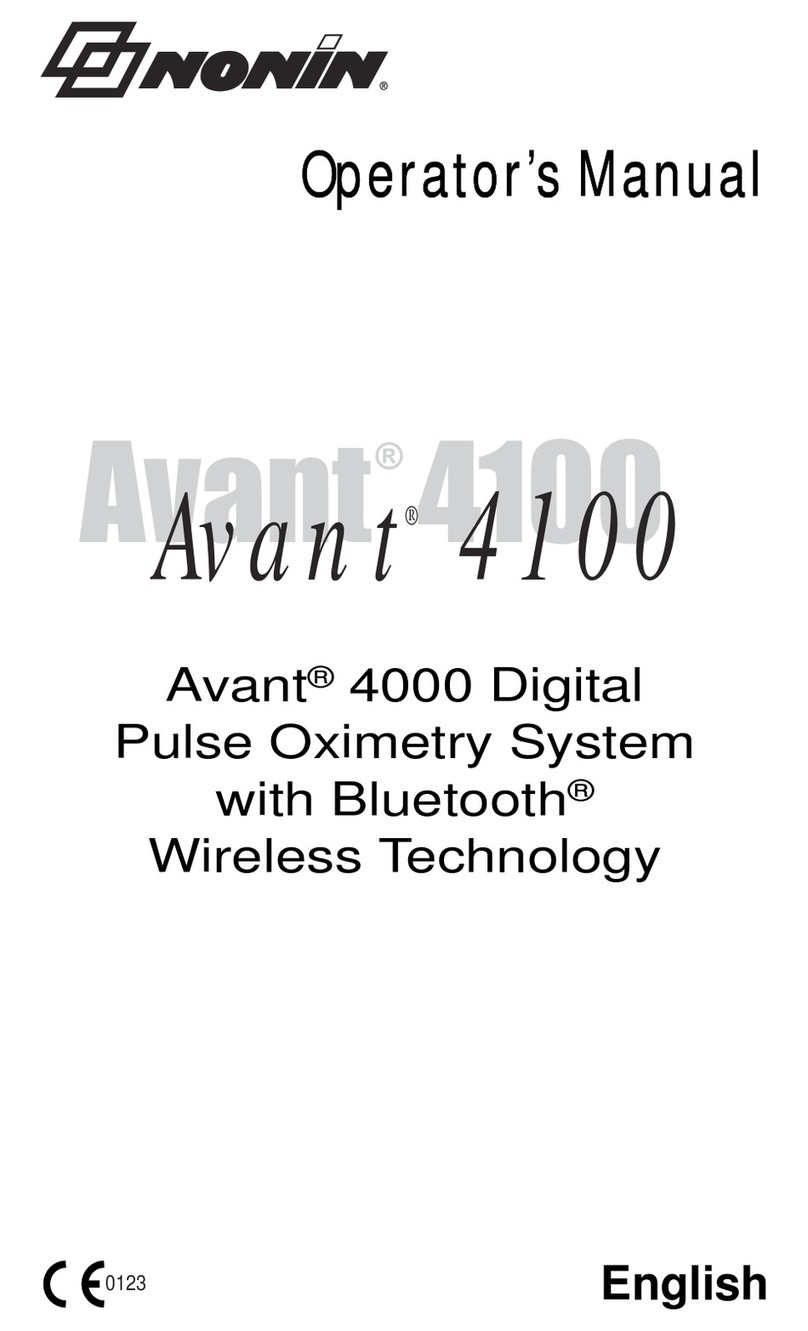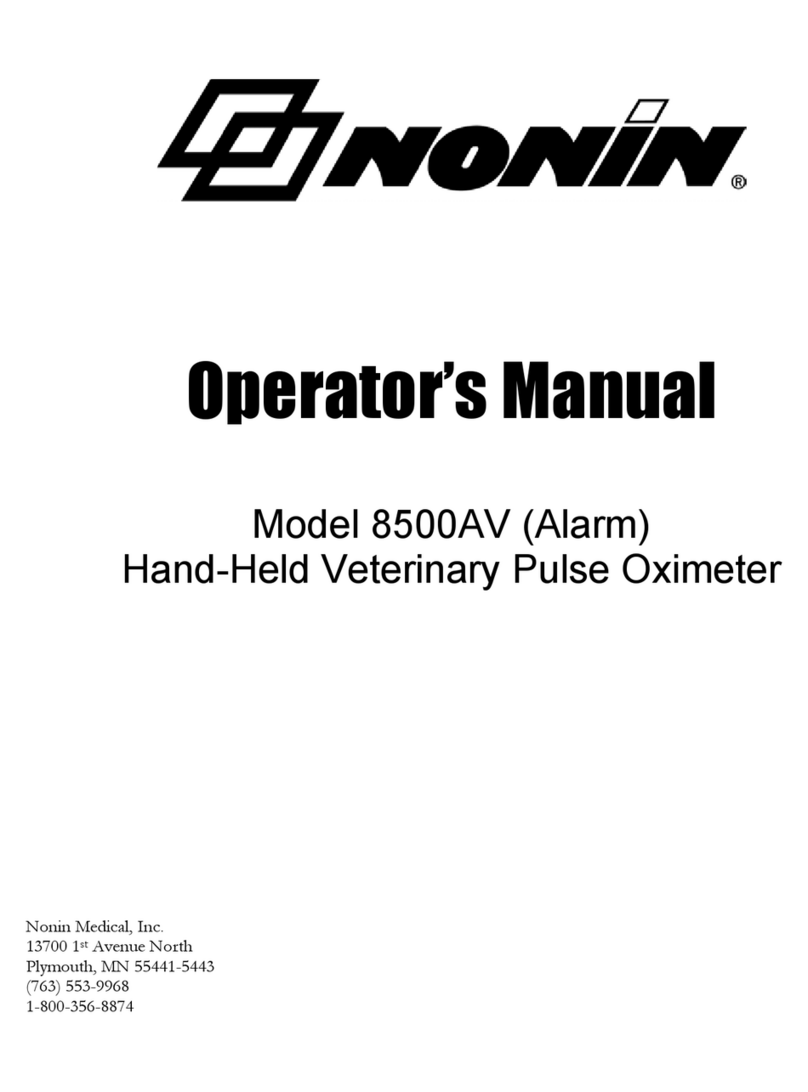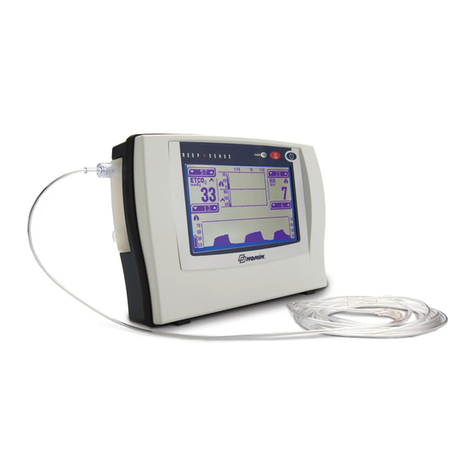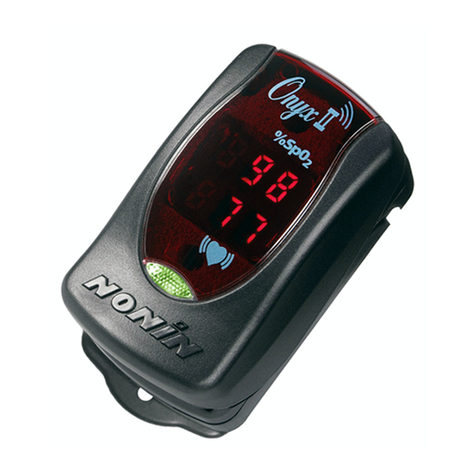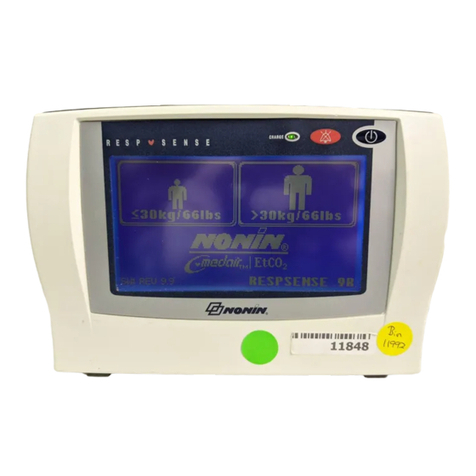
2
Cautions
• This equipment complies with International Standard EN 60601-1-2:2001 for electromagnetic compatibility for
medical electrical equipment and/or systems. This standard is designed to provide reasonable protection
against harmful interference in a typical medical installation. However, because of the proliferation of radio-
frequency transmitting equipment and other sources of electrical noise in healthcare and other environments, it
is possible that high levels of such interference due to close proximity or strength of a source might disrupt the
performance of this device. Medical electrical equipment needs special precautions regarding EMC, and all
equipment must be installed and put into service according to the EMC information specified in this manual.
• Read this manual carefully before using the NONIN Model 8600V veterinary pulse oximeter.
• Cardiogreen and other intravascular dyes, depending on concentration, may affect the accuracy of the SpO2
measurement.
• The NONIN Model 8600V pulse oximeter is calibrated to determine the percentage of arterial oxygen
saturation of functional hemoglobin measured at the fingertip of an adult human. Significant levels of
dysfunctional hemoglobins such as carboxyhemoglobin or methemoglobin may affect the accuracy of the
measurement. Other types of hemoglobin and alternate sensor locations may affect the calibration.
• Certain pharmacological agents used to sedate or anesthetize animals may have cardiovascular effects that can
adversely affect the performance of the pulse oximeter by reducing the perfusion to the sensor site. Examples
of commonly used agents that may have this type of effect on certain animal species are Detomidine HCl and
Xylazine HCl.
• There is a wide range of variability between animal species and their respective differences in anatomy,
physiology and responses to veterinary pharmacological agents. Therefore, the veterinarian will need to use
discretion when selecting sensors and / or sensor sites that are appropriate for the animal species and the
monitoring conditions.
• When attaching the sensor, make sure not to secure the sensor in a manner that will restrict perfusion. This
could inhibit proper function of the oximeter and cause discomfort or localized ischemia to the animal.
• If the sensor is not positioned on a perfused site, or at least ten seconds of green perfusion pulses cannot be
observed for a given sensor, change sensor location or sensor type until this condition is achieved.
• Be sure to follow instructions for proper connection of 8600VI cable to monitor and sensors. Improper
application will prevent proper function of the monitor system.
• The fiber optic cable contains glass fibers. Care must be taken when handling the cable. Do not bend sharply,
step on, pull, drop, or stretch the fiber optic cable.
• Measurements may be affected in the presence of magnetic resonance imaging (MRI) and computed
tomography (CT) devices. It is the facility’s responsibility to verify performance prior to installing equipment
in these environments.
• Do not immerse the 8600V or NONIN sensors in liquid to clean.
• Do not use caustic or abrasive cleaning agents on the 8600 or NONIN sensors.
• The 8600V is sensitive and must be repaired by knowledgeable and specially trained personnel only.
• This device has not been tested for immunity to electromagnetic disturbances.
• Portable and mobile RF communications equipment can affect medical electrical equipment.




















